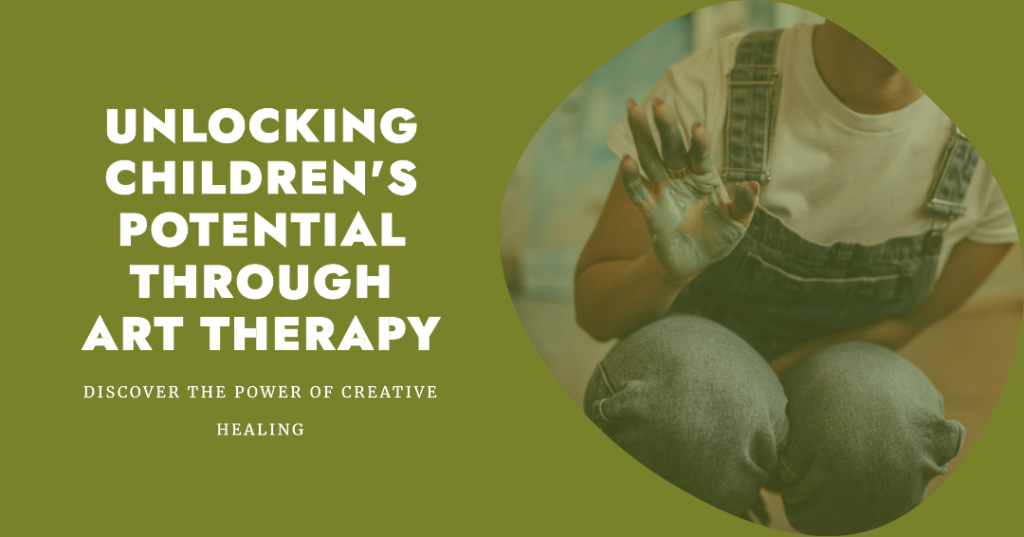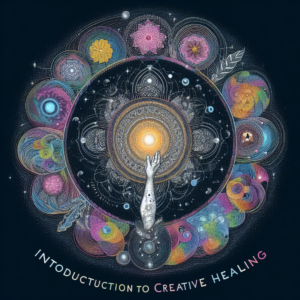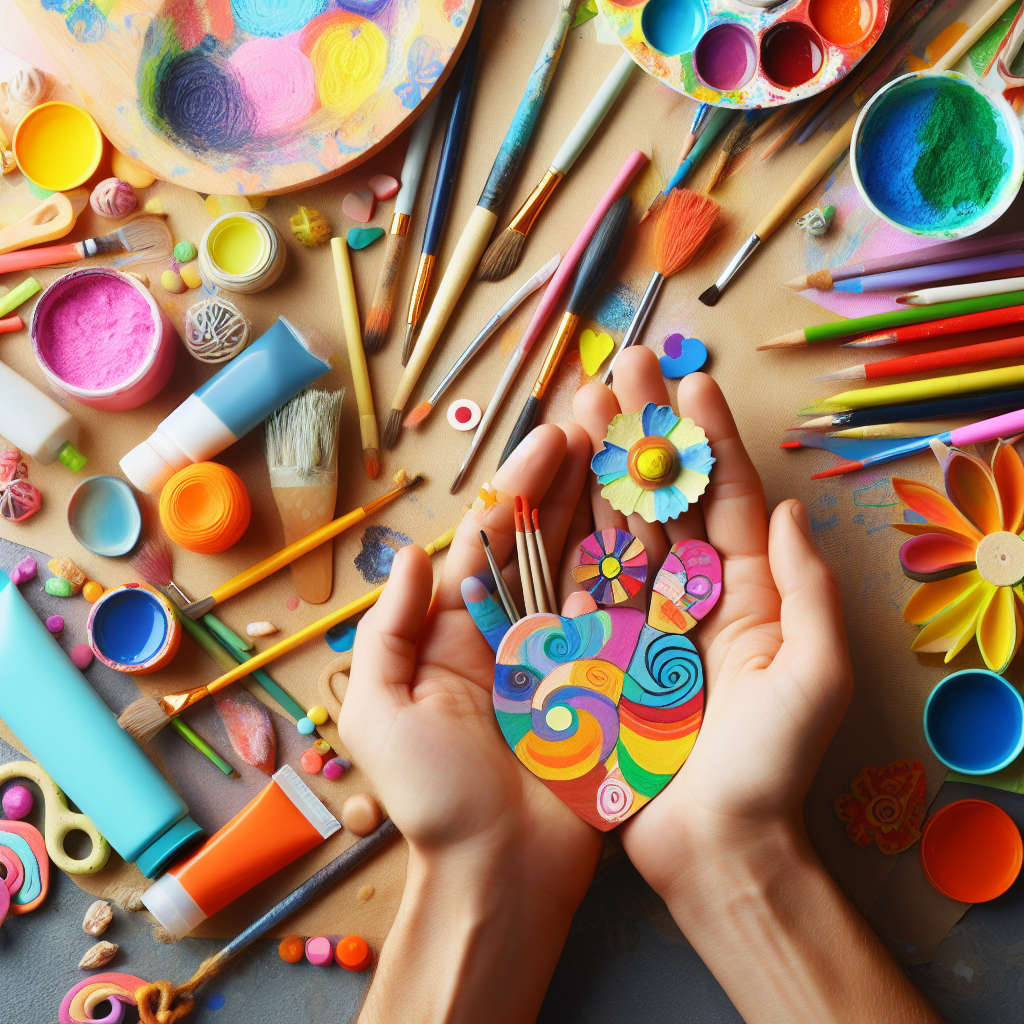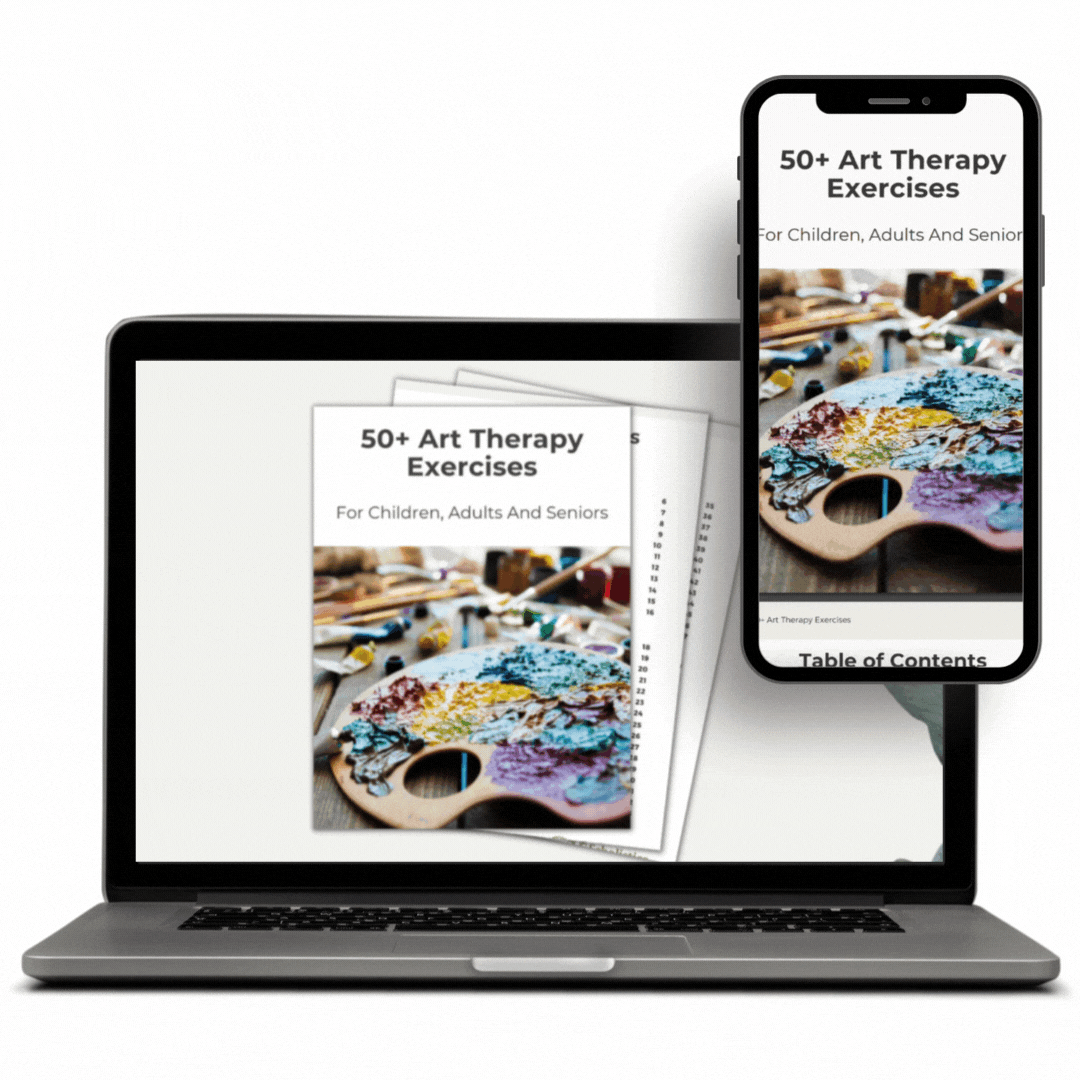5 Best Art Therapy Exercises For Children

Table of Contents
- Introduction to Creative Healing
- What is Art Therapy?
- The Benefits of Art Therapy Exercises for Children
- Introducing Scholistico’s “50+ Art Therapy Exercises for Children, Adults, and Seniors”
- Top Five Art Therapy Exercises for Children from the Book
- The Value of Art Therapy in Holistic Wellness
- Stepping into a Holistic Approach
- Frequently Asked Questions
Introduction to Creative Healing
Leveraging the utility of arts as a powerful vehicle for communication, understanding, and healing, it has found immense application in the field of therapeutic practices. Among these, art therapy is a known fact that has offered considerable benefits, particularly for children. On this path of assisting parents, caregivers, and educators for the same, we at Scholistico, your trusted online learning platform for holistic health and wellness, provide a comprehensive module in the form of the Art Therapy Practitioner certification course. As a bonus, our platform also features a curated selection of practical application through a product titled 50+ Art Therapy Exercises for Children, Adults, and Seniors“.

Art therapy, in its essence, is more than just drawing or painting. It’s a psychosocial practice that uses art media, images, and the creative art process to help individuals of all ages improve their mental and emotional well-being. For children, this approach is remarkably effective as it provides a non-threatening way of communicating their feelings and emotions. Our book 50+ Art Therapy Exercises for Children, Adults, and Seniors, included within the course, allows learners to effectively apply their knowledge, with activities being suitable for various age groups, going beyond mere theory, getting hands-on.
Providing a unique blend of theoretical grasp and practical application, this course and our leading product intends to revolutionize the way we perceive and approach children’s cognitive and emotional development. Join us in exploring the world of creative healing as we take a deep dive into art therapy and how the exercises outlined in our product can facilitate a positive change in a child’s world.
What is Art Therapy?
Art therapy sits at the intersection of psychology and creativity, bringing forth a therapeutic method that treats mental and emotional issues through the medium of art. It offers a platform for individuals to express and explore their feelings, reconcile emotional conflicts, enhance self-awareness, manage behavior, develop social skills, and elevate self-esteem – all through constructive and innovative processes of artistic expression.
In essence, art therapy gives the liberty to express what words may find difficult to convey, especially for children. Children often find it challenging to put their thoughts, fears, and confusions into words. Art therapy embraces this challenge and allows them to dive deep into their world, where they form an intimate dialogue with their fears, joys, and emotions, by creating something meaningful through art.
Our expert, Jane Peterson, instructor of our Art Therapy practitioner certification course at Scholistico, believes,
“Art can permeate the deepest part of us, where no words exist.” This sums up art therapy beautifully – a therapeutic technique that goes beyond words, allowing children to communicate their deepest thoughts and emotions through creative expressions.

The realm of art therapy is diverse and expansive, with numerous modalities, from drawing, painting, and sculpting to digital artwork and much more. Its adaptability and all-encompassing nature cater to a wide range of age groups – making it an effective tool for anyone and everyone.
The commitment of Scholistico to provide well-structured courses in the field of holistic medicine like this, aids in inculcating belief among participants of the effectiveness of energy and spirit and their role in therapeutic practices. As we progress in this article, we will delve deeper into the benefits of art therapy for children and how our featured product can change their world for good.
The Benefits of Art Therapy Exercises for Children
In the vast realm of holistic wellness, art therapy stands out as an integral component, particularly for children whose cognitive, emotional, and social capabilities are in the nascent stages of development. The colorful world of shapes, patterns, and textures becomes a compelling medium allowing them to express their feelings and thoughts. The benefits of such exercises extend beyond creative expression and reach the core areas of a child’s wellbeing.
Art therapy exercises help in cultivating emotional intelligence in children. By expressing their thoughts and feelings through art, kids can recognize, understand, and manage their emotions with greater efficiency. Moreover, they also promote better cognitive skills, as children are driven to think creatively and solve problems while engaging in artworks.
Art Therapy Activities according to age with benefits
| Age Group | Activity | Benefits |
|---|---|---|
| Children | Color mixing | Stimulates creativity, improves color recognition |
| Children | Clay modelling | Enhances gross motor skills, boost creativity |
| Adults | Collage making | Reduces anxiety, induces calmness |
| Adults | Painting/Drawing | Boosts self-esteem, a form of self-expression |
| Seniors | Mosaic Art | Improves concentration, enhances fine motor skills |
| Seniors | Water Colors | Reduces stress, improved emotional expression |
Simultaneously, children get to enhance their social skills through group art therapy exercises that encourage participation, coordination, and collaboration. They learn about team spirit, sharing, understanding others’ perspectives, leading to better social adaptation and interactivity.
Art therapy exercises also act as a cornerstone for fostering children’s self-esteem and confidence. Pouring their thoughts and emotions into a piece of art, children experience a sense of accomplishment that boosts their self-efficacy. They realize their capacity for creativity that fosters a higher self-worth leading to enhanced overall self-esteem.
One of the major advantages of art therapy exercises is stress reduction. Given the constant expectations and demands in today’s fast-paced society, even children are not immune to stress. Drawing, painting, or even crafting can serve as powerful outlets to vent their anxieties and relieve stress.
Lastly, these art therapy exercises assist as communication aids for children with special needs. For those having a hard time expressing themselves verbally, creating artwork offers an alternative way to communicate thoughts, feelings, and experiences thereby providing them with a sense of being understood.
Real-life anecdotal evidence aligns well with these benefits. For instance, Maya, an eight-year-old girl, found solace and confidence in art therapy when she was battling the intricacies of Attention Deficit Hyperactivity Disorder (ADHD). Through regular art exercises, her concentration improved, she expressed her emotions openly, and her social interactions became more positive.
Introducing Scholistico’s “50+ Art Therapy Exercises for Children, Adults, and Seniors”
In the journey towards advocating childhood wellness and holistic development, Scholistico offers an in-depth and vast collection of art therapy exercises bundled into the practical guide “50+ Art Therapy Exercises for Children, Adults, and Seniors”. The book is an absolute gem for parents, caregivers, educators, or anyone seeking to integrate art therapy into their or someone else’s wellness routine.

The book is a thoughtfully designed resource that empowers readers with a variety of compelling art therapy exercises. The 50+ exercises cater to a broad range of age groups, giving readers a robust understanding and application of art therapy.
Let’s say, for example, you are a parent trying to help your child vent out the daily stress and anxieties or efficiently channelize their boundless energy; this book provides a handful of exercises catering to your needs. Additionally, if you are an educator trying to improve the overall ambience of your classroom or prompt increased participation, the guide has you covered with explicit art therapy exercises.
The “50+ Art Therapy Exercises…” channels a structured and well-explained methodology on how each exercise should be conducted. It familiarizes readers with the needed resources, expected outcomes and helps gauge the progress of the participants.
The unique aspect of this Scholistico’s resource is that it doesn’t limit the exercises to children only, but extends seamlessly into exercises suitable for adults and seniors. This ensures a wider utility of the book, inculcating an environment of collective growth and wellness within homes and institutions.
In synchrony with the inherent philosophy of Scholistico, the book strengthens our mission to promote the benefits of art therapy and holistic health. The readers can apply their learnings practically, experiencing first-hand the transformation art therapy exercises bring about in the lives of children, adults, and seniors alike. Thus, paving the pathway for a balanced and healthy lifestyle for all.
Top Five Art Therapy Exercises for Children from the Book
A peaceable journey into the world of art therapy begins with understanding some of its simple, yet powerful exercises. Listed below are five of the prominent art therapy activities sketched out in our book “50+ Art Therapy Exercises for Children, Adults, and Seniors”. These exercises can serve as an excellent starting point to introduce art therapy to children.
1. Mood Meter
A simple and enjoyable activity that helps children recognize and pin their mood on a color chart. It would enable them to gain awareness of their emotions and express them visually in a safe environment.
Benefits: Enhances emotional intelligence and encourages honest expression of feelings.
2. Dream Catcher Drawing
Inviting children to create their personal dream catchers using an array of colors is an effective method to grasp their aspirations and fears, and a stepping stone towards overcoming challenges.
Benefits: Boosts self-confidence and facilitates better understanding of their inner selves.
3. Collage of Expression
Making a collage from pictures and cut-outs that represent their interests, likes, and hobbies. This activity can serve as a medium to express their unique identity.
Benefits: Reinforces self-identity and promotes cognitive engagement through creative thinking.
4. Mirror, mirror on the wall
Children are encouraged to draw a mirror image reflecting how they see themselves and how they believe others perceive them. This activity can foster meaningful introspection.
Benefits: Enhances self-esteem and promotes emotional intelligence by creating awareness about self-perception.
5. Storytelling through Sandplay
Children are given freedom to create their story using sandbox and miniature figures. This non-directive approach allows children to reflect their conscious and unconscious experiences.
Benefits: Boosts creativity, facilitates emotional healing and helps in resolution of conflicts.
Each of these exercises aims to simplify children’s complex emotions, thereby fostering a sense of understanding, catharsis, and healing, which, in turn, contributes positively to their holistic wellness.
The Value of Art Therapy in Holistic Wellness
In our contemporary society where an increasing emphasis is being placed on holistic approaches to health and wellness, art therapy plays a vital role. It addresses the whole person, integrating mental, emotional, and physical health, and aligning perfectly with the principles of holistic health. For children, introducing art therapy exercises at an early age can create a path towards a more balanced and fulfilling life.
Comparative Analysis of Art Therapy and Conventional Therapeutic Approaches
| Parameters | Art Therapy | Conventional Therapy |
|---|---|---|
| Mode of Communication | Visual, kinetic | Verbal and Written |
| Key Skills Enhanced | Creativity, self-expression | Cognitive skills, verbal communication |
| Preferred Age Groups | All Ages, particularly effective for children | Mostly adults |
| Associated Benefits | Emotional, cognitive, and neuromotor benefits | Cognitive, and behavioural benefits |
| Methods used | Drawing, painting, sculpting | Talking, counselling, cognitive behavioural therapy |
The long-term benefits of integrating art therapy into a child’s lifestyle cannot be overstated. Art therapy cultivates emotional resilience, helping children cope with life’s challenges in a more resourceful manner. By engaging in art therapy exercises children learn emotional regulation skills that can aid them well into adulthood. They develop a deeper sense of self-awareness and a broader perspective on their life experiences, fostering long-lasting resilience and adaptability.
Testimonies from our Art Therapy practitioners certification course graduates include stories like that of Lisa, a certified Art Therapist. Lisa shared her experience of using art therapy with a child suffering from trauma. Over time, the child was able to communicate his experiences and feelings effectively with the help of art therapy exercises and subsequently showed marked improvement in his overall behaviour and emotional stability.
Moreover, art therapy goes beyond just individual health benefits. It’s a tool for community building and social change. A child involved in art therapy exercises develops empathy, mutual understanding, and a sense of shared identity. These skills not only help the child grow as an individual but also contribute to creating a more inclusive and understanding society.
As Scholistico, we emphasize the importance of holistic health and wellness in all our courses, including the Art Therapy Practitioner certification course. Our training course and supplementary resources like the “50+ Art Therapy Exercises for Children, Adults, and Seniors” book are carefully designed to reinforce the principles of holistic wellness. By integrating art therapy, we aim to foster a sense of overall well-being in individuals, enabling them to lead healthier, more balanced lives.
Stepping into a Holistic Approach
When we think about maintaining our health and wellness, the first things that usually come to mind are exercise, nutrition, and medication. However, this perception is altering, paving the way for a more holistic approach, with therapeutic practices like art therapy at its core, curating an environment of overall well-being.

The process of creating art opens doors to communication, providing a visual platform to express emotions and thoughts, especially for children who might not yet be capable of voicing them. By integrating art therapy into a child’s daily routine or therapeutic regimen, you can contribute to their cognitive, emotional, and social development in a more meaningful way, encouraging the child to explore their potential and creativity to the fullest.
New-age platforms like Scholistico are doing remarkable work in propagating this holistic approach. Our Art therapy practitioner certification course and the “50+ Art Therapy Exercises for Children, Adults, and Seniors” are a testament to our ongoing commitment. We are dedicated to providing informative, accessible, and authentic content for all shopping for a holistic lifestyle transition or making a career change in this vibrant field.
So if you are intrigued by the world of holistic health or looking to broaden your understanding of therapeutic art practices, we invite you to explore the Art Therapy Practitioner certification course and the “50+ Art Therapy Exercises for Children, Adults, and Seniors”. Not only will you bond over these creative exercises with your children, but you’ll also be taking an invaluable step towards nurturing a more holistically healthy generation. Remember, every stroke of the brush or crayon is a step towards growth, healing, and self-expression.
Together, let’s paint a picture of wellness that goes beyond the canvas.
Frequently Asked Questions About Art Therapy Exercises
How do art therapy exercises benefit children?
Art therapy exercises enhance cognitive, social and emotional development in children. They stimulate creativity, help children express their feelings, improve problem-solving abilities, foster self-esteem, reduce stress, and act as communication aids especially for children with special needs.
Do I need to have artistic skills to benefit from art therapy exercises?
No, art therapy isn’t about creating a masterpiece. It’s about expressing yourself freely, so no artistic skills are necessary. Both children and adults can benefit from it.
Who can use the “50+ Art Therapy Exercises for Children, Adults, and Seniors” from Scholistico?
This book can be used by anyone interested in art therapy. It can be especially helpful for parents, caregivers and educators to guide children through art therapy exercises. It can also be beneficial for adults and seniors looking to use art as a therapeutic medium.
Can art therapy exercises assist children with special needs?
Yes, art therapy is often highly effective for children with special needs. It provides a non-verbal, illustrative medium for them to express their thoughts and emotions, which can be especially helpful for those with difficulty in regular communication.
How can Scholistico’s Art Therapy practitioner certification course help me?
This course provides comprehensive knowledge about art therapy, its benefits, and how to conduct art therapy exercises. The course can be suitable for individuals interested in holistic health, practitioners looking to expand their skill set or individuals considering a career in this field.
How can adults and seniors benefit from art therapy exercises?
While the benefits for children are well known, adults and seniors can also capitalize on art therapy. It is therapeutic for dealing with stress, anxiety, and depression. For seniors, it can aid in improving cognitive functions, fostering social connections, and offering a creative outlet.





[…] emotions, and thoughts of a child, making it an invaluable therapeutic tool. Our writing on 5 Best Art Therapy Exercises For Children offers an interesting array of activities for children to tap into art therapy’s potential. […]